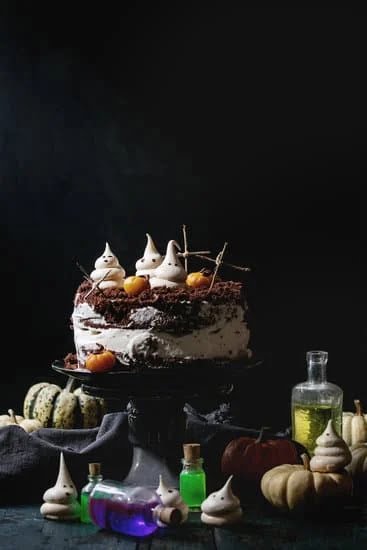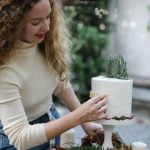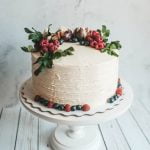Are you looking to add a touch of elegance and creativity to your cakes? Learning how to decorate a cake with melted chocolate can take your baking skills to the next level.
Whether you’re a baking enthusiast or a professional pastry chef, using melted chocolate as a decorating tool can bring your cakes to life in beautiful and delicious ways. In this article, we’ll explore the basics of working with melted chocolate, step-by-step guides for melting chocolate perfectly, techniques for decorating with melted chocolate, and tips for achieving professional-looking results.
When it comes to decorating cakes with melted chocolate, understanding the fundamentals is key. From choosing the right type of chocolate to mastering various decorating techniques, there’s much to consider. We’ll cover everything from selecting the right kind of chocolate – dark, milk, or white – to troubleshooting common issues that may arise during the decoration process.
Whether you’re interested in drizzling, piping, or creating intricate designs on your cakes, there’s no limit to what you can achieve with melted chocolate. With some practice, patience, and precision, you’ll be able to create stunning and professional-looking decorations that will impress your friends and family. So let’s dive into the world of decorating cakes with melted chocolate and unleash our creativity in the kitchen.
Understanding the Basics of Working With Melted Chocolate
Working with melted chocolate is a delightful way to decorate cakes and add a touch of elegance to your baked creations. Before you start, it’s important to understand the basics of working with melted chocolate, including the right temperature, texture, and tools needed for successful cake decoration.
When it comes to temperature, it’s crucial to melt the chocolate at the right heat to prevent it from seizing or becoming lumpy. The ideal temperature for melting chocolate is between 86°F to 90°F for dark chocolate and 82°F to 86°F for milk chocolate.
White chocolate should be melted at a lower temperature range of 80°F to 82°F. Using a candy thermometer can help you achieve the perfect temperature for melting your chosen type of chocolate.
In terms of texture, melted chocolate should have a smooth and glossy consistency. To achieve this, make sure that there are no water droplets in the bowl or on any utensils used for melting the chocolate. Even a small amount of water can cause the chocolate to seize and become unusable.
As for tools, you will need a heatproof bowl or double boiler, a silicone spatula or spoon for stirring, and piping bags or squeeze bottles for decorating. Additionally, having parchment paper or wax paper can make transferring and forming shapes with the melted chocolate easier.
To summarize:
- Use a candy thermometer to ensure that you melt the chocolate at the correct temperature
- Avoid getting water into your melted chocolate to maintain its smooth texture
- Use heatproof bowls or double boilers, silicone spatulas or spoons, piping bags or squeeze bottles, and parchment paper/wax paper as essential tools for working with melted chocolate
By mastering these basics, you’ll be well equipped to begin creating beautifully decorated cakes using melted chocolate as your artistic medium.
Choosing the Right Chocolate for Decorating
When it comes to decorating a cake with melted chocolate, one of the key decisions to make is choosing the right type of chocolate. Dark, milk, and white chocolate all have unique characteristics that can affect the end result of your cake decoration. Each type of chocolate has its own flavor profile and melting properties, so it’s important to consider these factors when making your choice.
Dark chocolate is often the go-to choice for many bakers when it comes to decorating cakes. It has a rich, intense flavor that pairs well with a variety of cake flavors.
Its high cocoa content also means it melts down into a smooth, glossy consistency that is perfect for drizzling or piping onto cakes. Dark chocolate is also less sweet than milk or white chocolate, which can be beneficial if you want to balance out the sweetness of the cake itself.
On the other hand, milk chocolate has a sweeter, creamier taste compared to dark chocolate. This can be a great option for decorating cakes if you want to add a touch of indulgence and sweetness to your dessert. However, it’s important to note that milk chocolate has a lower cocoa content, which means it may not hold up as well in warm temperatures and can be more prone to melting.
White chocolate is another popular choice for cake decoration due to its creamy texture and sweet vanilla flavor. While white chocolate doesn’t contain any cocoa solids like dark and milk chocolate do, it still adds a delicious richness and contrast to cakes. Keep in mind that white chocolate can be more temperamental when melting, so it’s important to watch the temperature closely to avoid any burning or seizing.
In summary, choosing the right type of chocolate for decorating your cake ultimately depends on personal preference and what flavor profile you want to achieve. Experimenting with different types of chocolate and understanding their melting properties will help you create beautiful and delectable decorations for your homemade cakes.
| Chocolate Type | Characteristics |
|---|---|
| Dark Chocolate | Rich flavor; high cocoa content; smooth melting consistency |
| Milk Chocolate | Sweet, creamy taste; lower cocoa content; prone to melting in warm temperatures |
| White Chocolate | Creamy texture; sweet vanilla flavor; temperamental when melting at high temperatures |
Step-by-Step Guide to Melting Chocolate Perfectly
Melting chocolate is a crucial step when decorating a cake with this delicious ingredient. Whether you prefer the stovetop, microwave, or double boiler method, achieving the perfect texture and temperature is essential for successful cake decoration. Each method has its own pros and cons, so it’s important to understand the differences and choose the one that best suits your preferences and available tools.
The stovetop method involves melting chocolate in a heatproof bowl placed over a pot of simmering water. This gentle indirect heat allows for gradual melting and better temperature control. On the other hand, the microwave method offers convenience and speed, but requires careful monitoring to prevent overheating and burning. Lastly, the double boiler method provides precise temperature control by using a specialized equipment designed specifically for melting chocolate.
To achieve perfectly melted chocolate regardless of the chosen method, it’s important to chop the chocolate into small, uniform pieces to ensure even heating. Stirring regularly during the melting process is also essential to prevent hot spots and maintain a smooth texture. Additionally, avoiding any contact with water or steam is crucial, as even a small amount can cause the chocolate to seize and become unusable.
Mastering the art of melting chocolate perfectly is an essential skill for any aspiring baker or pastry chef. By understanding each method’s advantages and disadvantages and following best practices for achieving ideal temperature and texture, you can elevate your cake decorating skills to new heights. With patience and practice, you’ll soon be creating stunning chocolate decorations that will impress anyone who sees – and tastes – your beautifully adorned cakes.
Techniques for Decorating With Melted Chocolate
Decorating a cake with melted chocolate can be a fun and creative way to add visual appeal and delicious flavor to your baked creation. Whether you’re a beginner or an experienced baker, mastering the techniques for decorating with melted chocolate, such as drizzling, piping, and creating designs, can take your cake to the next level.
One of the most popular techniques for decorating with melted chocolate is drizzling. This simple yet elegant method involves melting the chocolate to a smooth and pourable consistency and then using a spoon or pastry bag to drizzle it over the surface of the cake. This can create beautiful and artistic patterns on the cake’s surface, adding texture and visual interest.
Another popular technique for decorating with melted chocolate is piping. Using a piping bag fitted with a small round tip, you can create intricate designs and patterns on the cake’s surface. From delicate swirls and scrolls to intricate lace-like designs, piping allows for endless creativity when it comes to decorating with melted chocolate.
Creating designs with melted chocolate opens up a world of possibilities for decorating cakes. From freehand drawings to stenciled patterns, you can use melted chocolate to personalize your cake with any design you desire. By using tools such as toothpicks or small paintbrushes, you can easily create detailed designs that will impress your guests and elevate your cake decorating skills.
Mastering these techniques for decorating with melted chocolate can open up a world of creativity and allow you to personalize your cakes in unique ways. With practice, patience, and precision, you can achieve professional-looking results that will leave everyone impressed by your decorating skills.
By learning how to decorate a cake with melted chocolate using drizzling, piping, and creating designs techniques, you will be able to add an extra layer of artistry to your baking repertoire while also making each dessert uniquely yours.
Tips for Achieving Professional-Looking Results
Decorating a cake with melted chocolate can be a fun and creative way to add flair to your desserts. However, achieving professional-looking results requires practice, patience, and precision. Here are some tips to help you elevate your cake decorating game using melted chocolate.
Practice Makes Perfect
One of the most important tips for achieving professional-looking results when decorating a cake with melted chocolate is to practice as much as possible. Like any art form, mastering the technique of working with melted chocolate takes time and repetition. Start by practicing on parchment paper or wax paper before moving on to decorating an actual cake. This will allow you to perfect your drizzling, piping, and design skills without the pressure of getting it right the first time.
Exercise Patience
Working with melted chocolate requires patience, as rushing through the process can lead to mistakes and messy results. When melting chocolate, it’s important to do so slowly and carefully to avoid scorching or seizing. Allow the melted chocolate to cool slightly before attempting any decorating techniques, as this will give you better control over its consistency and flow. Remember that patience is key when it comes to achieving professional-looking results with melted chocolate.
Embrace Precision
Precision is essential when decorating a cake with melted chocolate. Whether you’re drizzling chocolate over the surface of the cake or piping intricate designs, paying attention to detail is crucial for a polished end result. Use tools like offset spatulas, piping bags, and small spatulas to help you achieve precision in your decorations. Take your time and focus on creating clean lines and defined shapes for a professional finish.
By practicing, exercising patience, and embracing precision in your techniques, you can achieve professional-looking results when decorating cakes with melted chocolate. Whether you’re creating simple designs or elaborate patterns, these tips will help elevate your cake decorating skills and impress anyone who takes a bite out of your beautifully adorned confections.
Creative Ideas for Using Melted Chocolate to Decorate Cakes
Decorating cakes with melted chocolate offers endless creative possibilities, from simple and elegant designs to stunning and intricate works of art. Whether you’re a beginner or an experienced baker, there are numerous ways to use melted chocolate to elevate the look of your cakes. Here are some creative ideas for using melted chocolate to decorate cakes and make them truly unforgettable.
Chocolate Ganache Drizzle
One of the simplest yet most effective ways to use melted chocolate in cake decorating is by creating a smooth and decadent ganache drizzle. To achieve this look, simply melt your choice of dark, milk, or white chocolate and mix it with an equal part of heavy cream.
Once the ganache has reached a pourable consistency, carefully drizzle it over the top of your cake. This technique adds a touch of elegance to any cake and can be customized with additional garnishes such as fresh fruit or edible flowers.
Chocolate Piping Designs
For those looking to add more intricate designs to their cakes, piping melted chocolate is a great way to showcase your creativity. Using a piping bag fitted with a small round tip, you can create delicate filigree patterns, intricate swirls, or personalized messages on top of your cake. Practice different piping techniques on parchment paper before moving on to decorating your cake to ensure precision and control.
Marbled Chocolate Accents
Another visually stunning way to incorporate melted chocolate into your cake decorations is by creating marbled accents. By layering different colors of melted chocolate and swirling them together with a toothpick or skewer, you can achieve a beautiful marble effect that adds visual interest and texture to your cake’s design. This technique works particularly well for creating eye-catching borders or abstract patterns on both frosted and naked cakes.
With these creative ideas for using melted chocolate in cake decorating, you can take your baking skills to the next level while impressing friends and family with stunning dessert creations.
Troubleshooting Common Issues
Decorating cakes with melted chocolate can be a fun and creative way to add a unique touch to any baked creation. However, like any form of art, there are bound to be some challenges along the way. In this section, we will explore some common issues that may arise when working with melted chocolate for cake decoration and provide some helpful troubleshooting tips.
One of the most common problems when working with melted chocolate is the appearance of cracks in the finished decoration. This can occur if the chocolate is not tempered correctly or if it experiences fluctuations in temperature during the decorating process. To avoid this issue, it is important to ensure that the chocolate is properly tempered and that it is kept at a consistent temperature while decorating the cake.
Another common problem that can arise when decorating cakes with melted chocolate is blooming. Blooming occurs when the cocoa butter in the chocolate rises to the surface and forms a white or grayish film. This can happen if the chocolate is not properly tempered or if it is exposed to fluctuations in temperature. To prevent blooming, it is essential to temper the chocolate correctly and store the decorated cake in a cool, dry place once finished.
In addition to cracks and blooming, there are other potential dilemmas that can occur when using melted chocolate for cake decoration. These may include issues such as clogged piping tips, uneven drizzling, or designs not setting properly. By understanding these potential problems and implementing effective troubleshooting techniques, decorators can overcome these challenges and achieve professional-looking results when using melted chocolate to decorate cakes.
Conclusion
In conclusion, mastering the art of decorating cakes with melted chocolate is a skill that can bring your baking to a whole new level. By understanding the basics of working with melted chocolate, choosing the right type of chocolate, and learning various techniques for decoration, you can create stunning and professional-looking cakes that will impress both friends and family.
The step-by-step guide provided in this article on melting chocolate perfectly will help you achieve the right texture and consistency every time. Whether you choose to use the stovetop, microwave, or double boiler method, following these tips will ensure that your melted chocolate is smooth and easy to work with. Additionally, troubleshooting common issues such as cracks and blooming will help you overcome any challenges you may encounter while decorating with melted chocolate.
By incorporating creative ideas for using melted chocolate to decorate cakes, such as drizzling, piping, and creating designs, you can take your cake decoration skills to the next level. With practice, patience, and precision, you can achieve professional-looking results that are sure to impress. So go ahead and try something new – decorate your next cake with melted chocolate and let your creativity shine.
Frequently Asked Questions
How Do You Put Melted Chocolate on a Cake?
Melted chocolate can be put on a cake by first ensuring that the cake has completely cooled. Then, using a spoon or a piping bag, drizzle or spread the melted chocolate over the cake. Allow it to set before serving.
How to Decorate a Cake With Chocolate?
Decorating a cake with chocolate can be done in various ways. One popular method is to create chocolate shavings using a vegetable peeler and then gently press them onto the frosted cake. Another way is to use a piping bag to create intricate designs with melted chocolate on top of the cake.
Can You Decorate With Melted Chocolate?
Yes, melted chocolate can be used for decoration. It can be drizzled over cakes, cookies, or pastries for an elegant and delicious touch. Moreover, it can also be used to create intricate designs and patterns on desserts due to its versatility when melted.

Welcome to our cake decorating blog! My name is Destiny Flores, and I am the proud owner of a cake decorating business named Cake Karma. Our mission is to provide delicious, beautiful cakes for all occasions. We specialize in creating custom cakes that are tailored specifically to each customer’s individual needs and tastes.





